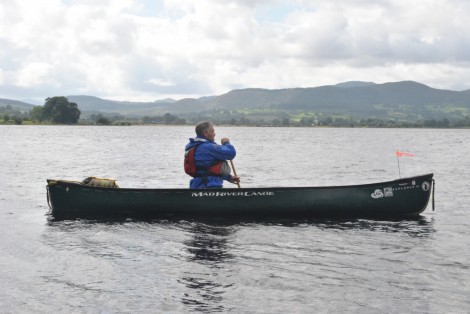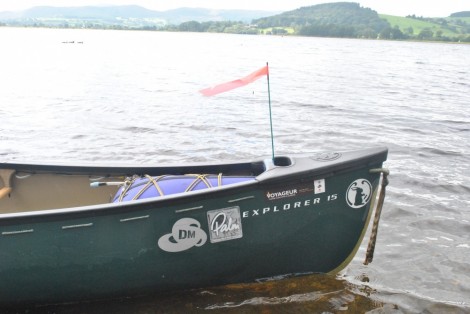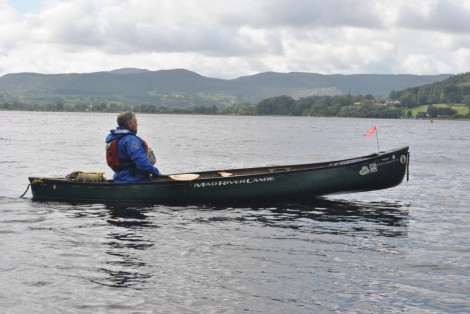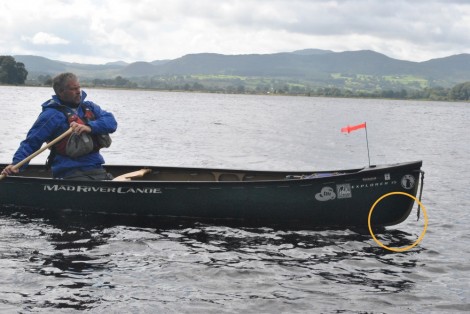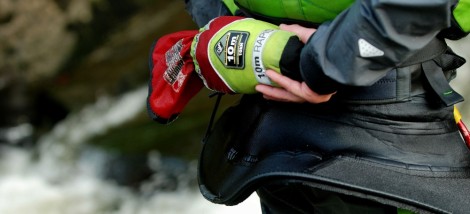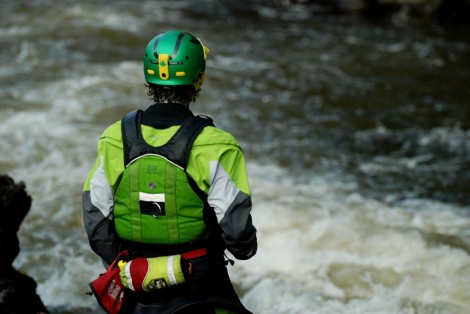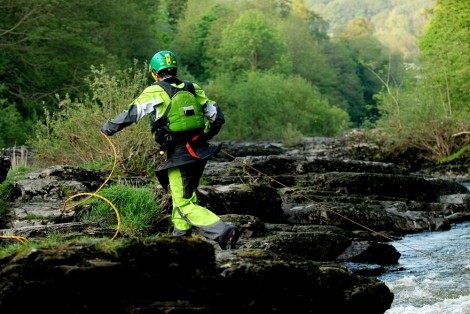Coaching Dispatch – Trim
Wether your paddling on open, or moving water, having a good understanding of and being able to apply the principles of trim are fundamental to being an effective open boat paddler.
One way to think about trim is as a footprint that is created in the water by the boat, or the amount of boat in contact with the water and the shape that is created in the water by the boat. The size, shape and depth of this footprint can be changed by both your position and that of any kit in the boat, both of which can have a dramatic effect on performance.
Usually when things aren’t quite working as they should be, or paddling seems like hard work then I encourage people to revisit their trim and adjust it accordingly as a first priority.
Think trim, trim, trim and trim again!
You can develop your understanding of trim especially in relation to wind with a few simple exercises. Firstly find a safe area of open water with a steady wind blowing. Then use extremes of trim by moving your position to either all the way forward to the bow or back to the stern and take note of the effect this has in relation to which end of your boat points into wind. Once this is confirmed try paddling around into, down and across the wind.
TOP TIP: You can help your awareness of wind and its effect in relation to trim with the use of a few quick and simple visual aids. Drop a couple of balls into the bottom of your boat and watch where they settle in your boat. More towards the bow or stern? Use a simple tell-tale flag on the bow of your boat to determine a definite wind direction and now relate this to the direction your boat faces with your given trim.
Very soon you will become aware that although these extremes of trim work they can effect your overall stability, control and ability to paddle effectively. So lets look look at changing our trim with more subtlety. After all Im sure you will agree that you really don’t wont to be getting up and moving around in your boat too much in windy conditions i.e. the middle of a lake or Loch risking a capsize!
So rather than making big changes to our trim by moving, lets look at being more subtle by moving our kit/bags. A good way to experiment with this is with the use of some dry bags full of water.
25 Litres drybag is a good starting point (you may need more) and will result in up to 25 Kg of weight. When placed right at the bow or stern this can can have quite a dramatic effect. View someone else in a boat using the bags full of water to see the effect or have someone photograph you in your boat. Pay particular attention to the where the bow stem or stern curls and under the boat and how much much if any of a gap is produced.
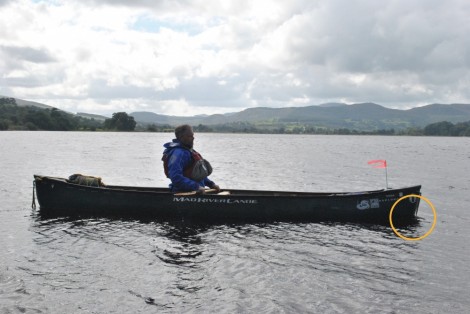
Gap at bow stem no longer visible as the trim has been adjusted to bow heavy by moving the drybag forward
Now imagine your boat is sat in the center of a clock face with the wind coming from a12:00 direction. By using subtle movements of the bag/s, and then fine tuning with small movements of yourself (leaning forward/backward or simply moving slightly ) try and get your boat to point to the various numbers/hours on the clock face, and naturally stay there without much effort from yourself.
Next time your out try and achieve the same effects with your kit bag or simply carry a spare drybag that you can fill with water and use to adjust your trim.
Hopefully with this new found knowledge you can get your boat to naturally point in your desired direction of travel and life will be somewhat easier! It makes sense that if your boat is already pointing in your desired direction of travel, paddling will be a lot easier and there will be no need for wasted energy trying to fight with any wind.
Remember think trim, trim, trim and trim again
In my next coaching dispatch I will give some ideas on how to use trim when paddling in windy conditions on open water, along with a few other strategies for coping with wind.
This along with more of my coaching articles will soon be available for download as PDF’s and in ibook format
Big thankyou to Andy Morgan for giving his time and helping with the photos and filming
See you on the water……
Jules
Bespoke Canoe Coaching, Guiding, Safety & Rescue training and BCU awards








